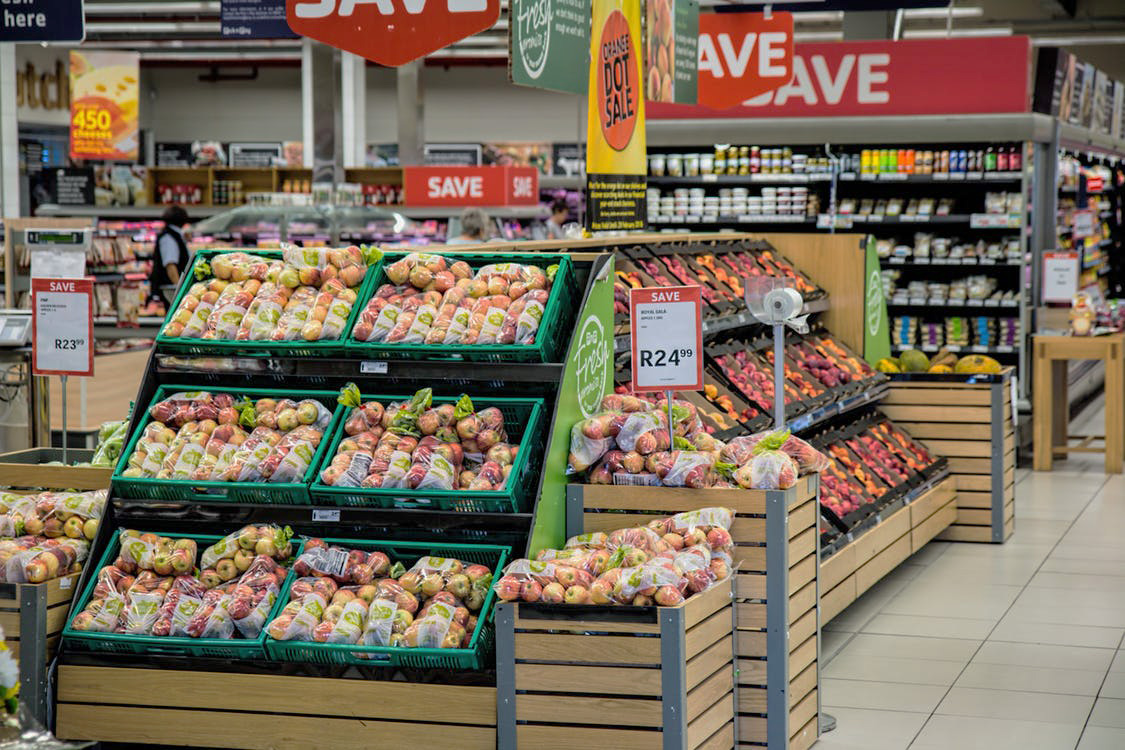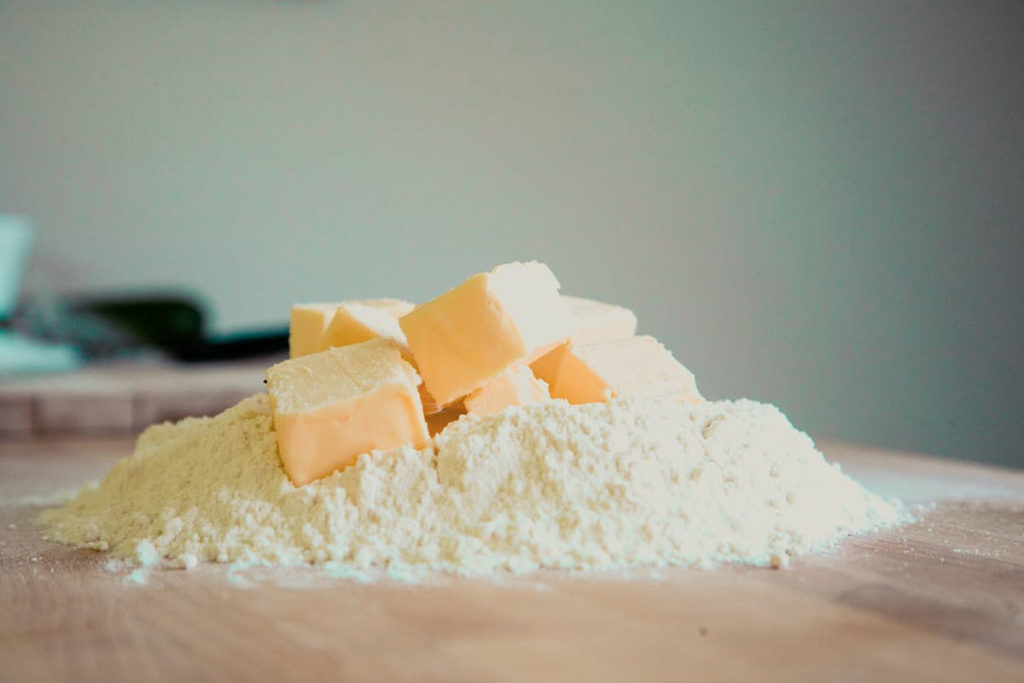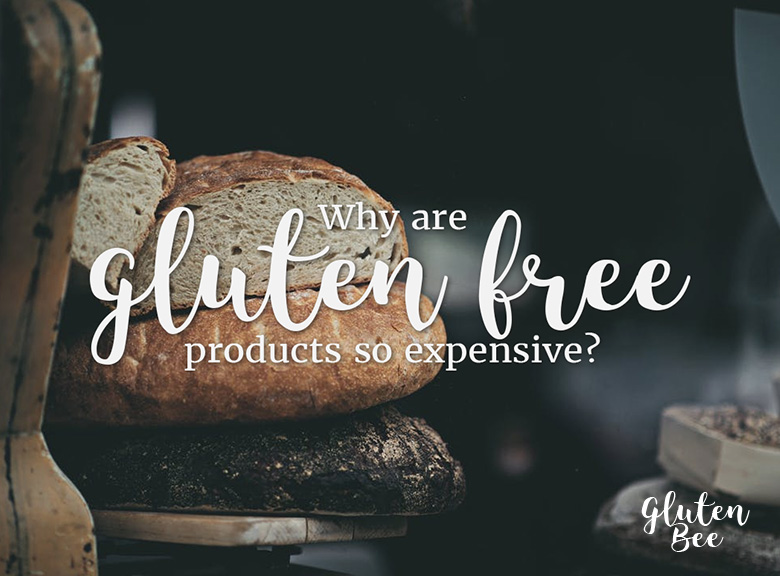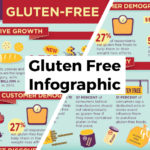As a coeliac or someone suffering from gluten sensitivity, it’s easy to think that the gluten-free product manufacturers are out to get you.
A popular complaint in the gluten-free community is that when compared to regular products, gluten-free options are regularly twice the price, if not much more.
Sometimes it seems downright unfair that gluten-free products cost so much more than regular staple items. So why are gluten free products so expensive?
In this article I hope to lay down a few reasons why gluten-free alternatives cost so much more. As angry as this issue may make you, it’s important to look at the situation from all angles.
Are the manufacturers trying to take advantage of you, or are they charging a reasonable price for their product?
In all honesty, I think the latter, and in this quick article I hope to give you some reasons why charging a more expensive price is quite reasonable for gluten free products.
So let’s take a look at why gluten free products are more expensive.
1. The market is MUCH smaller

Like any business, supply and demand has a huge effect on price. Unfortunately for us gluten-avoiding kind, gluten-free products make up just a tiny percent of the overall market size.
With only a small number of people to sell gluten free foods to, companies naturally can’t take advantage of “economies of scale”.
Economies of scale is a term used in business referring to the benefits of mass market selling – the more you can sell, the cheaper you can produce your product for.
Unfortunately for gluten free manufacturers, those numbers are much smaller than their main-market competitors. This results in gluten-free products being more expensive than their standard counterparts.
2. More ingredients are used

Typically, bread related products require three basic ingredients: flour, water and yeast. Of course extra ingredients may be used for more extravagant breads, but at their core, only 3 ingredients are necessary for regular dough-based products.
On the other hand, gluten-free products can use dozens of ingredients. In order to replicate the authenticity of flour-based bread products, manufacturers need to use extra ingredients like Xanthan gum, sugar, potato starch, corn flour, tapioca, stabilisers and the list goes on.
All of these extra ingredients add to manufacturer’s bottom line, a cost which is passed on to us, the gluten-free consumer.
3. Gluten-Free Food is more expensive to produce

Not only do gluten-free foods require more ingredients, but those individual ingredients are usually more expensive as well.
Regular wheat flour is a highly available and cheap raw ingredient. Tapioca starch, unfortunately, is not. And therefore it is more expensive.
On an industrial scale, all that rice flour, xanthan gum and sugar adds significant expense to the cost of producing gluten free products.
4. Gluten-Free Certifications

Depending on the country you live in, different laws may apply to the advertising and packaging of certain products.
In many countries, for companies to label their foods as “gluten free”, they must first have been certified to do so.
In the great scheme of things this won’t add huge costs for the manufacturer, but it is still an additional cost that must be considered.
5. Cross contamination issues

Cross contamination is a big issue in the gluten free industry.
You may have heard this term thrown around in relation to oats. Oats are a cereal grain which are typically gluten free. However they are often harvested and processed using the same equipment that is used to harvest gluten containing grains like wheat.
This results in the oats being exposed to dust from grains like wheat, and subsequently being contaminated with gluten.
So what has this got to do with the price of gluten-free bread?
In order to produce gluten free foods, manufacturers need to completely avoid cross contamination of ingredients. This means they need to use completely separate equipment (and often separate factories) to ensure your food stays safe.
Even restaurants offering gluten free foods will need to use separate fryers and work areas to avoid cross contamination.
This adds a significant cost to the production of gluten free food as manufacturers need to buy two sets of equipment.
Conclusion
It’s very easy to get frustrated at the cost of gluten free foods, especially if you have young gluten-sensitive children who want to eat the same foods as other kids their age.
But in my opinion, it’s important not to think the manufacturers are taking advantage of us.
Each of the points listed in this article are genuine reasons why gluten free food is more expensive. Each reasons adds to the manufacturer’s bottom line, which I believe is fairly passed on to the consumer.
An important thing to keep in mind is that manufacturers are in no way obligated to subsidise the cost of of gluten free products.
There has recently been fiery debate around government subsidies in the UK for coeliac patients, but the world of business is subject to a free market.
The price of gluten free food is sometimes hard to swallow, especially without feeling victimised, but unfortunately the gluten-free market isn’t yet big enough to compete with the low cost of everyday staples.
Since being diagnosed as coeliac, one of the ways I have overcome the expense of gluten free food is by changing my diet so i don’t rely on them.
I personally do not think it is healthy to frequently consume gluten-free alternative food and there is growing evidence to support this.
As so I choose to eat them as infrequent treat, which in turn helps me keep some extra pennies in my pocket.
Your thoughts?
I know this is a tough issue for many people out there. How does the price of gluten free food affect your budget and lifestyle?
Let us know in the comments!







His there any help to the cost of celiac food all I get is 317 universal credit i justed can’t afford it i am always tied and a bloated stomach
Sorry to hear that Richard. We understand it is not easy. Your best bet is to focus on foods that are naturally gluten free and on special. Things like rice and beans are cheap and can go further. Veggies that are on sale. Fruits, nuts, and other snacks like that. You can also find some gluten free coupons/deals on Find Me Gluten Free, a great resource! Visit the website for coupons here: https://coupons.findmeglutenfree.com/
Hope this helps!
Ive heard that the sourdough in bread will break down the wheat and make it safe to eat! Is this true?
Hi Donna, whilst it is true that sourdough breaks down gluten, in 99.99% of case, there will still be a lot of gluten present in the bread.
Hey Adam, I was diagnosed with Coeliac Disease just over a year ago and the cost of GF products has been one of my biggest grumbles ever since. Reading this article has really improved my outlook about it – particularly the part about certifications costs, I hadn’t thought about that being included! So thank you for sharing 🙂
Being newly diagnosed Celiacs, this article helped. First thing I noticed was how much more gf food is! What do you eat mostly instead? It is difficult sometimes to try and have a balanced diet because not only am I celiac, I am vegetarian and now sensitive to dairy (new, came with my celiac diagnosis). :(. Thank you 🙂
Thanks so much for the comment Dawn! I can totally relate to how difficult this can be. I typically stick with grilled chicken or steak, lots of rice, beans, veggies, and personally Greek yogurt helps my stomach heal. I know you said you’re avoiding dairy, so maybe look for some fermented foods or other probiotic rich foods.